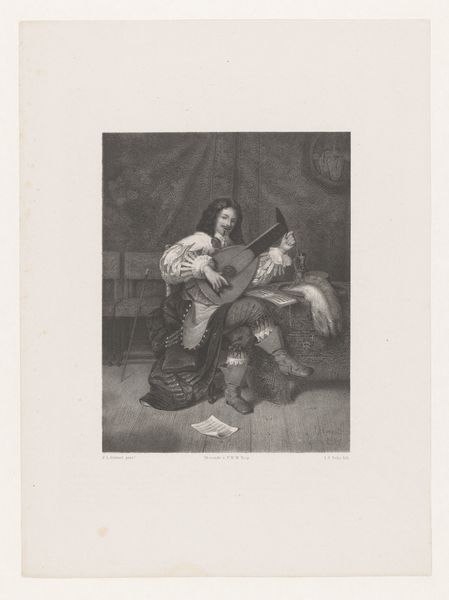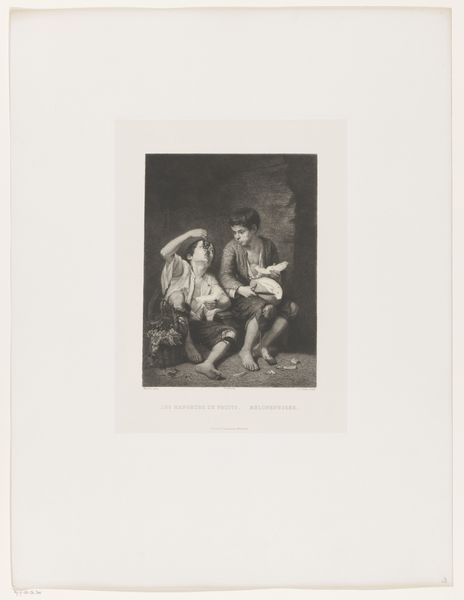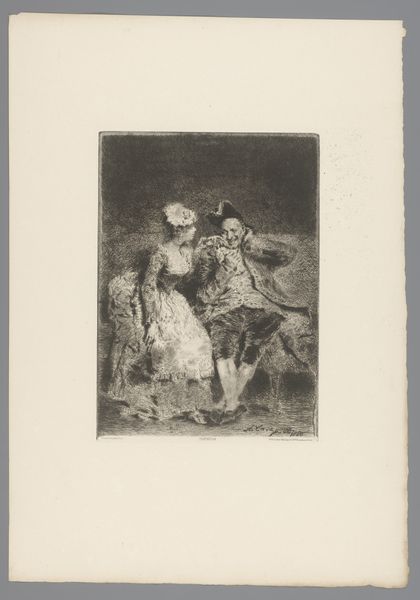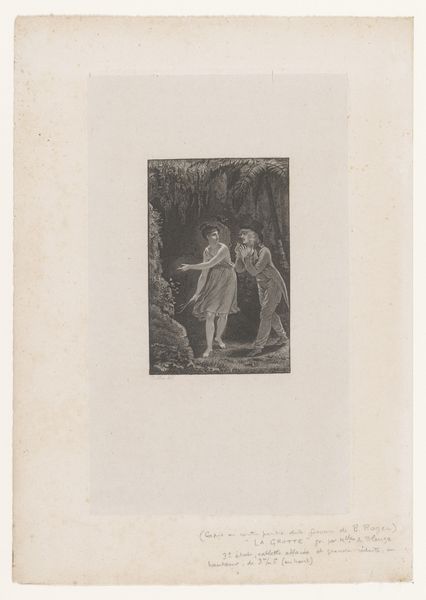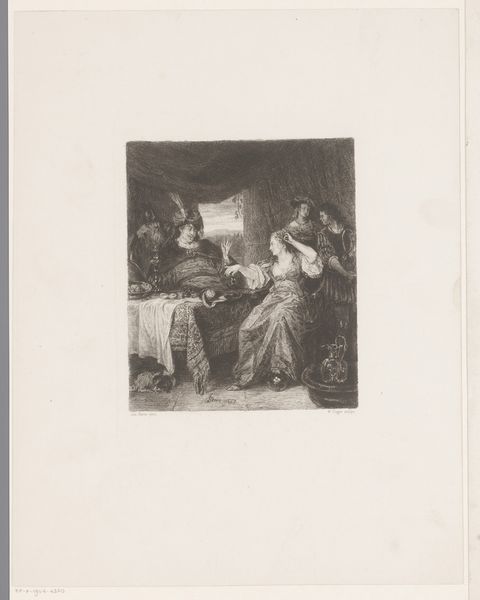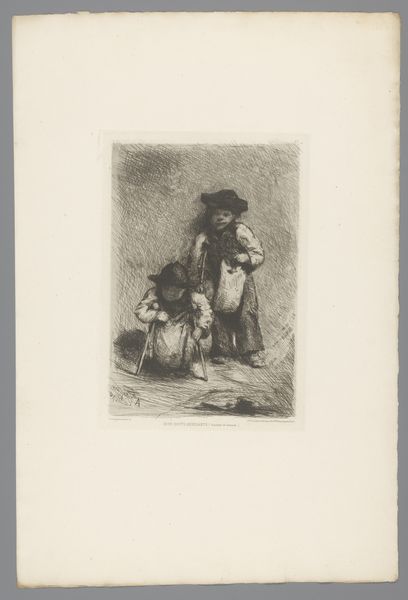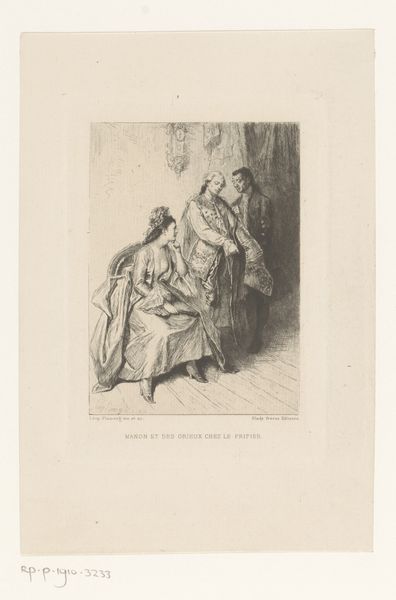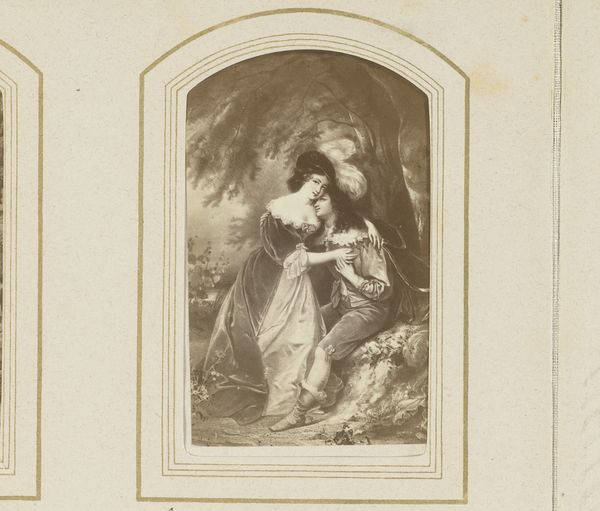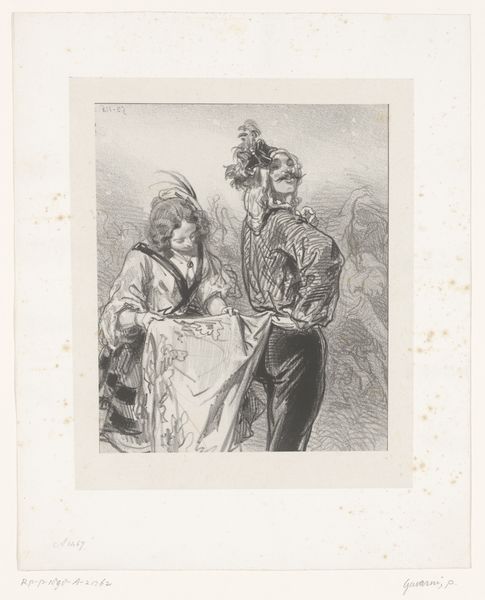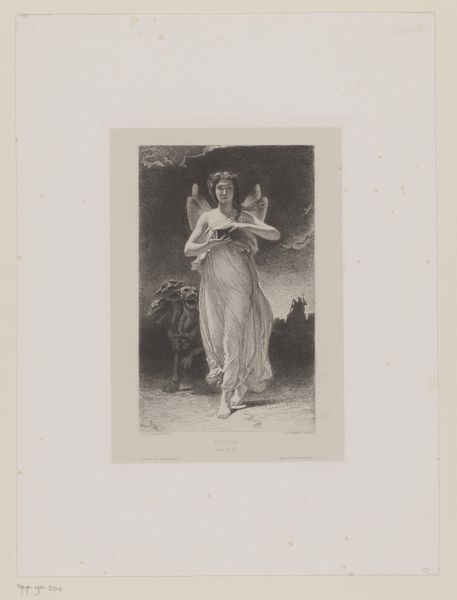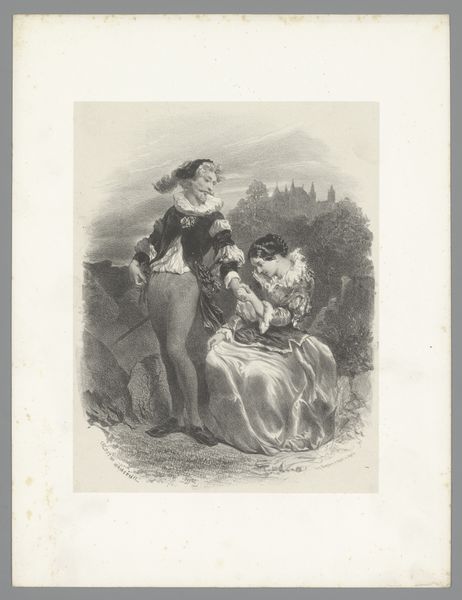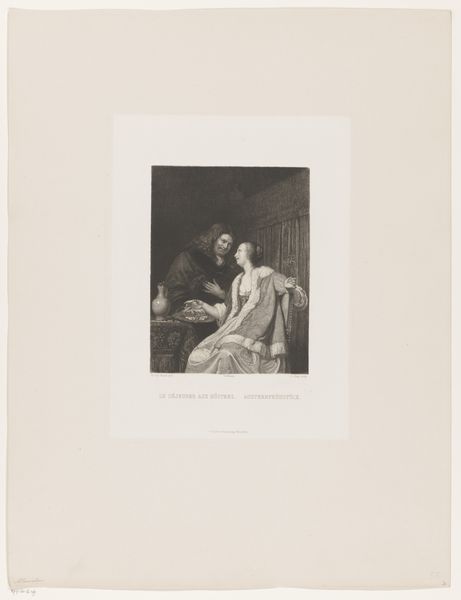
Dimensions: height 448 mm, width 313 mm
Copyright: Rijks Museum: Open Domain
Curator: The immediate drama is palpable, wouldn't you say? It is charged with Romanticism, this engraving titled "Man fleeing from his victim after a duel," dating from somewhere between 1830 and 1880. Editor: Yes, undeniably. The line work alone—the scratchy, frantic marks—convey the raw tension. I find myself drawn to the dynamism of the composition. See how the fleeing figure is off-center, almost lunging forward. It suggests an urgent need for escape. Curator: Indeed. Executed by Adolphe Mouilleron, this print belongs to a broader cultural fascination with scenes of violence and honour. Think of the historical context of duelling, particularly in 19th-century Europe—often a method, however barbaric, to resolve disputes among gentlemen. It reveals quite a lot about societal codes and public expectations around masculinity. Editor: Note, too, the striking contrast between light and shadow, typical of the period. It not only accentuates the emotion of the scene but also emphasizes the figure of the swordsman; and do you notice his pose, how erect it is despite him clearly moving in flight. Curator: Precisely. And how does this interplay affect your understanding of the broader theme? I suspect there’s perhaps also an interpretation beyond merely masculinity and settling an argument – think also on those Romantic painters fixated on heroism – a duel also speaks to the limits of human control and inevitable consequence of action. It is an ethical examination perhaps. Editor: Interesting idea. I was fixated on the compositional aspects of contrast but hadn't given much consideration beyond surface reading into morality; regardless of such ideas the sharp precision is clearly important here as we can witness how a range of details from gesture to expression are perfectly communicated using line. I see now how context informs interpretation. Curator: A valuable reminder of how art reflects, shapes and also challenges the dominant paradigms of its time, through this work we not only have witnessed violence but the ethics behind it, too. Editor: And through formalism, we see how to approach artworks as carefully as the artist's lines themselves.
Comments
No comments
Be the first to comment and join the conversation on the ultimate creative platform.
